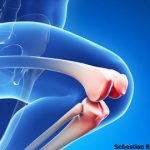NEW YORK (Reuters Health)—Inpatient rehabilitation did not lead to better mobility following total knee replacement compared with a home-based program in a randomized controlled trial (RCT) conducted in Australia.
The findings do not support inpatient rehabilitation for adults undergoing uncomplicated total knee arthroplasty, conclude the authors in JAMA on March 14.1
“Normally, one study is not considered enough to change practice, but in this case, there may be justification,” Dr. Justine Naylor from Liverpool Hospital, New South Wales, tells Reuters Health by email.
“This study supports a previous RCT involving both knee and hip replacement patients in Canada [around 250 patients]. We now have two RCTs of sufficient size indicating the same thing: Inpatient therapy is not superior to less intensive therapy and yet it is far more expensive,” he notes.
In the HIHO trial, Dr. Naylor and colleagues tested whether inpatient rehabilitation followed by a monitored home-based program after total knee arthroplasty yielded better mobility, function and quality of life outcomes than a monitored home-based program alone.
The research team assigned 81 patients to 10 days of inpatient hospital rehabilitation followed by an eight-week, clinician-monitored, home-based program and 84 to a home-based program alone. An additional 87 patients who preferred to receive the home program rather than be randomized participated in an observational group.
The primary outcome was mobility at 26 weeks after surgery measured with the six-minute walk test. On this measure, inpatient rehabilitation followed by a monitored home program did not provide superior mobility relative to the monitored home program alone in patients with uncomplicated arthroplasty who were deemed appropriate for discharge directly home (mean difference, -1.01; 95% CI: -25.56 to 23.55).
Furthermore, there were no between-group differences in patient-reported pain and function or quality of life. No patient had an adverse event related to participating in the trial.
Clinicians and policy makers “need to consider the cost implications and sustainability of the rehabilitation options available for adults undergoing total knee arthroplasty,” the authors write in JAMA.
“These considerations,” they add, “have motivated new models of care delivery and reimbursement, such as the Comprehensive Care for Joint Replacement model in the U.S., whereby non-inpatient therapies are encouraged.”
“Given that the amount of inpatient therapy provided daily in the current study is comparable with that provided in inpatient rehabilitation facilities in the U.S., the findings of this study suggest that patients who have undergone arthroplasty are not being disadvantaged by these initiatives in terms of physical recovery,” Dr. Naylor and colleagues adds.
“The findings,” they say, “should also inform rehabilitation models elsewhere, encouraging clinicians to focus on the most cost-effective options.”
A related study released today ahead of presentation March 16 at the American Academy of Orthopaedic Surgeons annual meeting finds that even patients who live alone can recover safely and effectively when discharged directly home after total hip or knee replacement surgery.2
In this study, there was no increase in complications or unplanned clinical events for patients living alone compared with those living with other people, and no significant differences in functional outcomes following surgery, or in reported pain.
“In the past, most surgeons have been reticent to discharge patients directly home after joint replacement surgery if they live by themselves; instead, opting for such patients to enter a rehab facility,” co-lead author Dr. William J. Hozack, an orthopaedic surgeon at The Rothman Institute in Philadelphia says in a conference news release.
“However, we found that patients living alone were able to safely recover without any increase in the rate of complications. Even more strikingly, patients were generally happy and content being in the comfort of their own home during recovery,” he notes.
In an interview with Reuters Health, Dr. Hozack’s co-lead author Dr. Andrew Fleischman, also from The Rothman Institute, notes that currently at his institution only about 10% or less of patients actually go to inpatient rehabilitation after hip or knee replacement.
“We are starting to think of it as kind of the place where the sicker patients or those without social support would go. Our study shows that even patients without social support may actually be better off at home,” Dr. Fleischman says.
“The JAMA paper, I think, is the best evidence so far that even a home program on its own is a strong candidate in terms of producing function. For patients who don’t go to inpatient rehab, the majority of centers are sending them for formal outpatient therapy for about six weeks. But the trend even for that is going in the direction of doing exercises at home and delaying the outpatient therapy to identify a smaller group of patients that actually having trouble getting good range of motion back,” Dr. Fleischman says.
References
- Buhagiar MA, Naylor JM, Harris IA, et al. Effect of inpatient rehabilitation v.s a monitored home-based program on mobility in patients with total knee arthroplasty: The HIHO randomized clinical trial. JAMA. 2017;317(10):1037–1046. doi:10.1001/jama.2017.1224
- American Academy of Orthopaedic Surgeons. News release: Even if you live alone, home may be the best place to recover after total joint replacement surgery. 2017 Mar 14.


